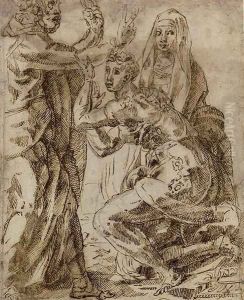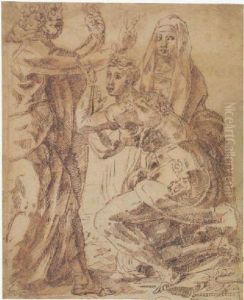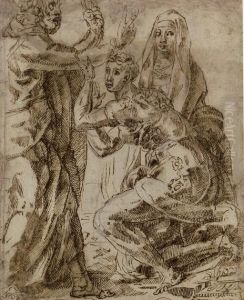Jacopo Di Giovanni Di Francesco (Jacone) Paintings
Jacopo Di Giovanni Di Francesco, better known as Jacone, was an Italian painter active during the Renaissance, a period marked by a resurgence of interest in the art, culture, and philosophy of ancient Greece and Rome. Born in 1494 in Florence, Italy, Jacone was part of a vibrant artistic environment that was home to many of the most celebrated artists in history, such as Leonardo da Vinci, Michelangelo, and Raphael. Despite the presence of these towering figures, Jacone managed to carve out a niche for himself, developing a distinctive style that set him apart from his contemporaries.
Jacone's early life and training are not well-documented, but it is known that he was active in Florence and possibly had connections with more prominent artists of the time, which would have influenced his artistic development. His work is often characterized by a robust and vigorous approach to painting, with a preference for bold colors and dynamic compositions. This style was somewhat at odds with the more refined and idealized approach preferred by many of his contemporaries, giving Jacone a unique place in the Florentine art scene.
Throughout his career, Jacone worked on various commissions, including religious and secular subjects. His paintings often featured dramatic narratives, and he had a particular talent for capturing the intensity of human emotions. However, despite his skill and unique style, Jacone did not achieve the same level of fame as some of his contemporaries. This was perhaps due to his somewhat unconventional approach to painting, which may not have been as widely appreciated in his time as it is today.
Jacone's contributions to the art world were recognized more fully after his death in 1557. Art historians have come to appreciate his work for its emotional power and technical skill. While he may not have been a household name like some of his contemporaries, Jacone's paintings are a vital part of the rich tapestry of Renaissance art. They offer insight into the diversity of artistic expression that flourished in Florence during this golden age of creativity.


